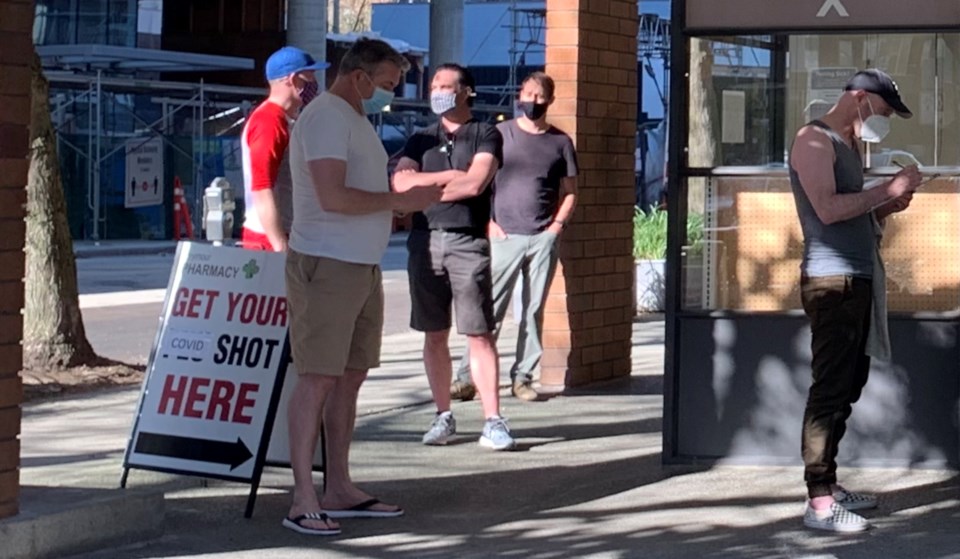As Canada approaches the 700-day mark of the pandemic, the disaster’s state of play is as grim as it is discouraging. On Dec. 22, Canada reported 12,114 new COVID-19 infections — a record for daily cases since the start of the pandemic.
With a patchwork of provincial pandemic restrictions across Canada changing daily, many holiday season activities have either been scaled back or cancelled for the second year in a row. The context for these disruptions is that as we approach the end of 2021, the number of Canadians killed by COVID-19 has surpassed 30,000.
At this point in the COVID-19 disaster, it is beyond the capacity of federal or provincial governments to provide a way out of this emergency. COVID-19 has no respect for norms or established practices of how we deal with a disaster. Prime Minister Justin Trudeau has resorted to suggesting Canadians hunker down to stop the spread of omicron.
Canadians need to rethink their relationship to the pandemic by learning to live in a state of continual disaster for the foreseeable future.
Contrasting messages
In a wide-ranging federal government news conference, the Trudeau administration projected an approach of prudence.
The Canadian approach is a stark contrast to the American approach, which is to not panic about omicron and to try to enjoy the holidays. Pointed questions from reporters forced the Trudeau government to push back at U.S. President Biden’s message that vaccinated persons could gather safely for the holidays, despite the spread of omicron.
Deputy Prime Minister Chrystia Freeland rejected the notion that the federal government was in any way offering a counsel of panic or a counsel of despair.
Leading up to the holiday season, common activities included waiting in lines — sometimes futilely — at liquor stores to obtain take-home testing supplies, not being able to obtain testing results in a timely manner, and a “hunger games scramble” for vaccination and booster appointments.
Experiences such as these do not contribute to reducing panic or despair.
The disaster cycle
Emergency management planning often uses a four-phase disaster cycle: mitigation, preparedness, response and recovery. In many instances of natural disasters, the four-phase disaster cycle model works well to dissect disasters and better understand them, providing lessons to manage future disasters.
In figuring out how to cope with disasters, the disaster cycle provides reference points to guide responses to a sudden emergency to eventual recovery. For example, an analysis conducted a decade after the 2009 earthquake in L'Aquila, Italy used the four-phase disaster cycle to dissect the response to a natural disaster.
With the ongoing COVID-19 pandemic, we’re still in the emergency part of the disaster. The reference points in the disaster cycle leading from response to recovery are lost, and recovery is not yet discernible. The public is too fatigued to maintain a constant state of preparedness. And the possibility of any mitigation is a distant dream at this point.
Recent research in risk management suggests that disasters are dynamic — the event evolves according to the actions taken to counteract its impact. Considering the changing nature of emergencies and responses incorporates innovation, entrepreneurship, leadership, situational awareness, resilience and learning.
A dynamic approach can help catalyze new thinking on how to deal with the uniqueness of disasters like COVID-19.
The Blitz spirit
Perhaps inspiration can be sought from London during the Second World War. Londoners hunkered down through an eight-month-long German bombing campaign.
Perhaps intangible traits like those of the Blitz Spirit are now needed — the ongoing disaster of COVID-19 needs to be met with a grim willingness to carry on. We have no other choice.
Somehow citizens subjected to months of air raids learned to deal with a continual disaster. The tenacity and resilience shown during the Blitz can offer population-level insights regarding the current trauma of COVID-19 and offer suggestions to current-day hospital workers regarding fears of their hospitals being overrun.
According to historians, pandemics typically have two types of endings. The first is the medical ending that is reached when the incidence and death rates plummet. The second is the social ending, where either due to fatigue or other reasons, individuals decide the pandemic is over for them, regardless of the science. Drawing a parallel to the Blitz, imagine the consternation of air raid wardens if individuals tired of blackout regulations and turned on lights at night signalling their location to enemy bombers.
Going into 2022, it is time to accept that we can no longer manage our way out of this disaster. We just have to cope as best we can by hunkering down — there is no other choice.
Jack L. Rozdilsky is a Professor at York University who receives funding from the Canadian Institutes of Health Research as a co-investigator on a project supported under operating grant Canadian 2019 Novel Coronavirus (COVID-19) Rapid Research Funding.




